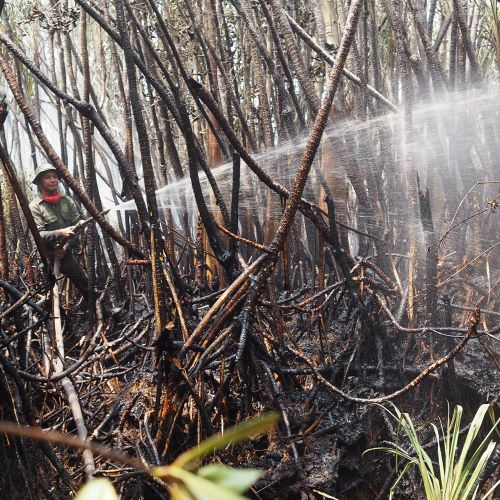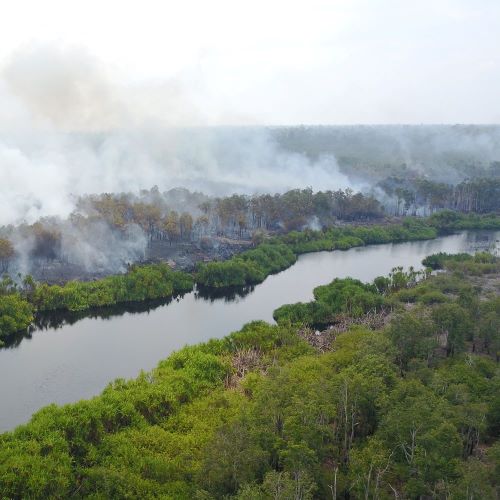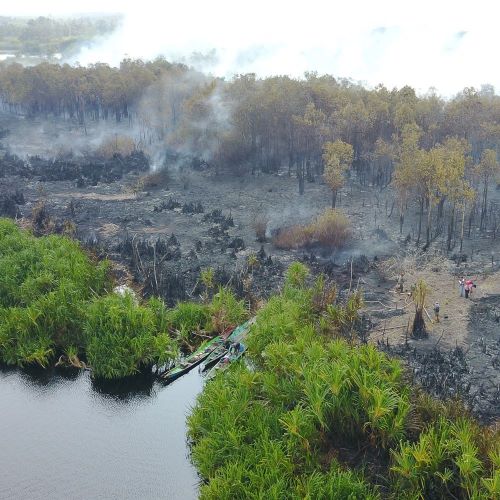Our partner Borneo Nature Foundation (BNF) puts everything on the line each year to protect one of the most biodiverse and important forests on earth. The Sebangau forest is capable of storing more carbon than most forests because of the rich peat lying in the ground. But every year as the dry season approaches, our teams gear up for major fire fighting to save the forest and the largest population of Bornean orangutans.

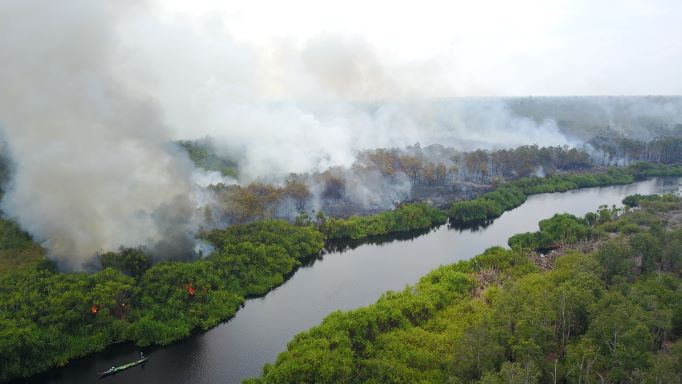
So… what on earth is peat?
Peat forests are one of the most carbon-rich ecosystems on the planet - and therefore the most efficient carbon sink on earth. According to the International Union for Conservation of Nature (IUCN), peat stores up to 550 gigatonnes of carbon globally, or over 40 percent of all soil carbon. This exceeds the carbon stored in all other vegetation types, including the world's forests, even though peat only covers three percent of the land's surface.
Peat is decomposed tree matter, which has been compacted within a wet, swampy environment for thousands of years. Peat forms when plant material does not fully decay in wetland areas. As it builds up over the years, peat holds water, which creates wetter conditions that allow the wetland to expand. One of the best ways to slow climate change is to keep peat in the ground, keep it wet, and stop it from burning.
But as the planet heats up and the climate changes, droughts become longer and more frequent. As the peat forests disappear or are drained by illegal canals, the peat dries out and becomes more flammable. Instead of being a massive carbon sink, these forests then become combustible nightmares waiting to happen. The tiniest spark can make the dry peat flare up, releasing untold amounts of carbon into the atmosphere.
To add to the dire situation in the Sebangau forest, when dry peat catches alight, it doesn’t just burn on the surface. The flames also spread underground and can create a catastrophic scenario. A spark in one area can lead to flames erupting many kilometres away, destroying another part of the forest. This area is home to the largest population of Bornean orangutans, and every dry season, they’re at risk.
Learning from the devastating fires of 2015
In 2015, devastating forest fires raged through much of Borneo, leading to what was called ‘the Southeast Asian Haze’. Thousands of orangutans are believed to have died in the fires, which lasted for most of the dry season (July to September). Billions of tonnes of carbon were released into the air. The fires exposed 69 million people to toxic smoke, causing the premature deaths of up to 17,000 people, many of whom were children.
Soon after the fires, BNF formed Community Patrol Teams and Fire Fighting Teams to provide an ongoing buffer. They never want to see their forest go up in flames again. But every year as they approach the dry season, they still fear a return of hell on earth. “Our worst nightmare is to have fires within the forest,” they’ve said. We’re proud to work with and support BNF’s work. Although 2019 also saw devastating fires, we were able to fight them more effectively than in 2015, thanks to the work of the Fire Fighting Teams.
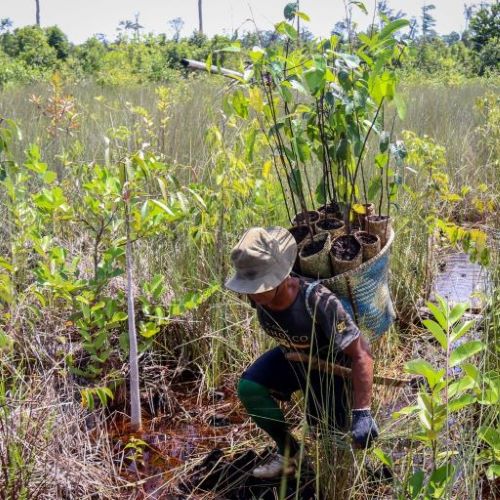
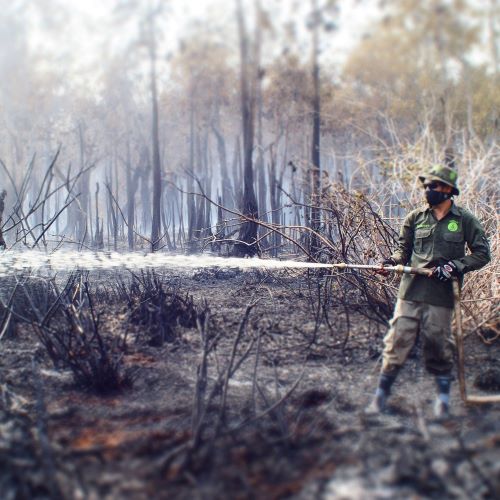
_-__2017_-_sabangau_forest_-_markurius_sera_square.jpg)
